Funeral Program Examples: Understanding the Purpose and Creating a Thoughtful Memorial
A funeral is a time for friends and family to gather and honor the life of a loved one who has passed away. One of the most common elements during these services is a funeral program, which serves as a guide for attendees and a lasting tribute to the deceased. For those who are new to the process or want to create a meaningful, personalized program, finding good funeral program examples can be extremely helpful.
In this resource, we will walk through the significance of funeral programs, why they are used, what they should include, and offer funeral program examples to inspire you in creating a tribute that reflects the life and memory of your loved one.
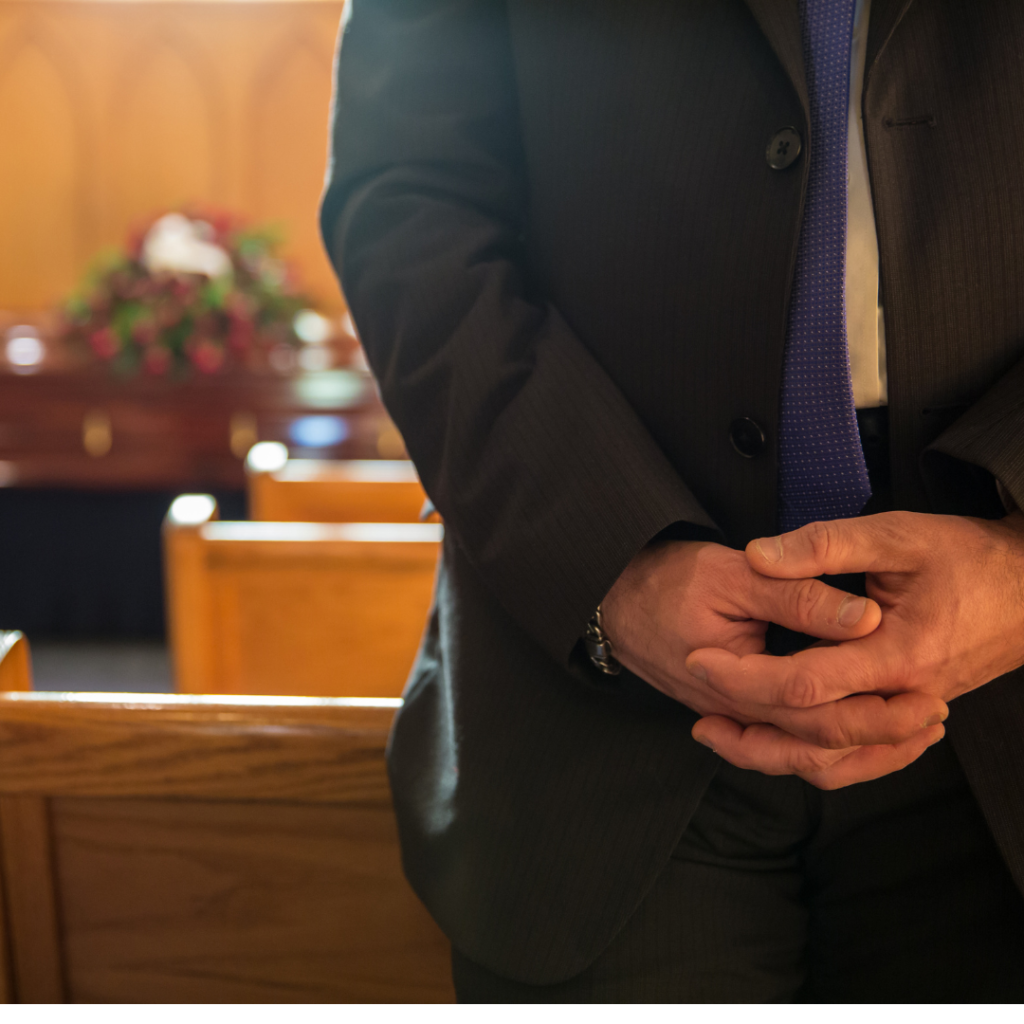
What Is a Funeral Program?
A funeral program is a printed booklet or pamphlet handed out at the funeral or memorial service. It serves as a guide, outlining the order of events, including readings, eulogies, prayers, and musical selections. More than just an agenda, it also pays homage to the deceased by including personal touches like photographs, favorite quotes, or memories shared by family and friends.
While every funeral program is unique, they generally share the same format and components. These programs can range from simple, single-sheet layouts to elaborate booklets with multiple pages, depending on the type of service and the preferences of the family.
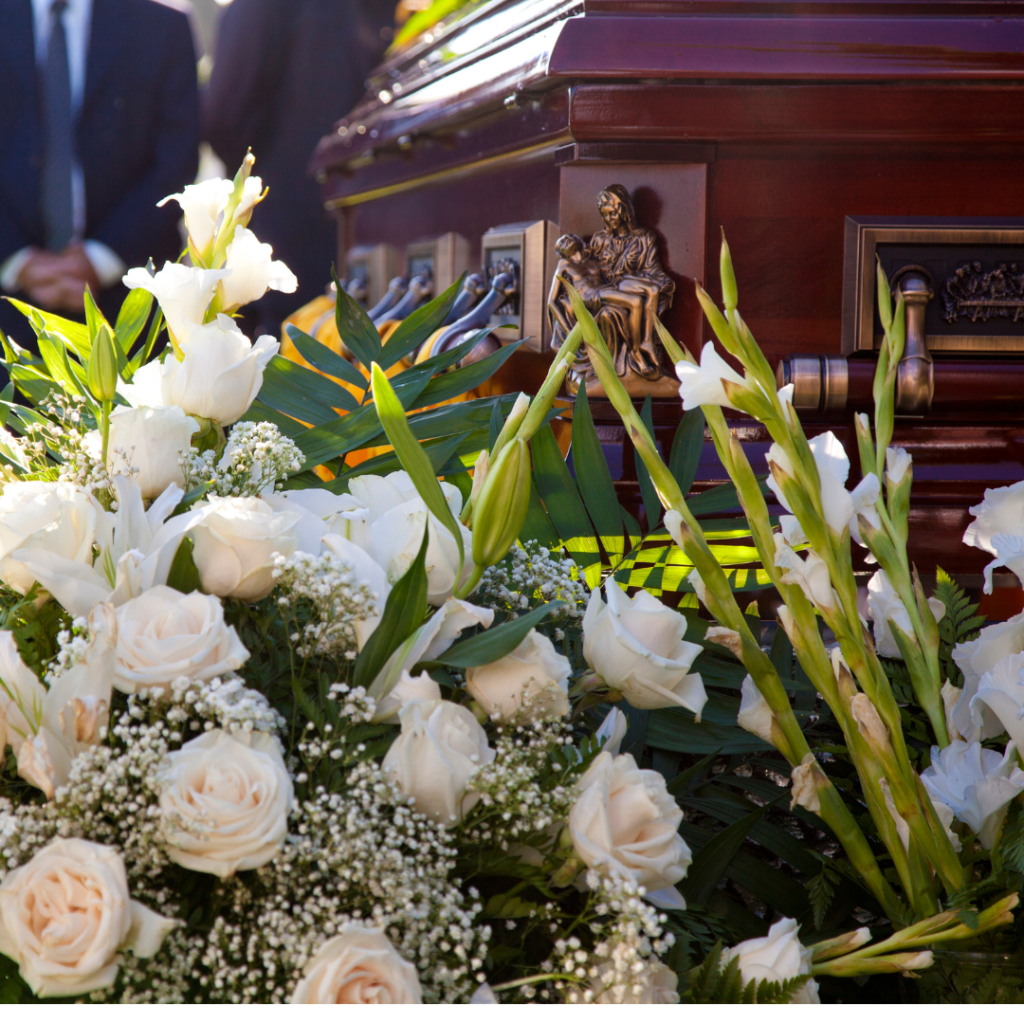
Why Are Funeral Programs Used?
Funeral programs are an essential part of the memorial process for several reasons:
- Guides Attendees Through the Service: For those attending the funeral, a program offers a clear understanding of how the service will proceed. This ensures everyone knows when to participate in readings, sing hymns, or observe moments of silence.
- Honors the Deceased: Funeral programs provide an opportunity to reflect on the life of the person being memorialized. Including a biography or personal stories in the program helps attendees appreciate the individual’s unique contributions to the world.
- Creates a Keepsake: Many people keep funeral programs as mementos to remember the service and the person they have lost. For this reason, funeral programs are often designed thoughtfully, with elements like photographs or favorite quotes that capture the essence of the deceased.
- Shares Information: Funeral programs often contain practical information such as the date and location of the service, the name of the officiant, and details of any post-funeral receptions or gatherings.
By incorporating these elements, a well-crafted funeral program becomes more than just a list of events—it becomes a cherished tribute that helps loved ones grieve, remember, and honor the departed.
Key Elements of Funeral Programs
Creating a thoughtful obituary program requires careful consideration of both content and design. Many people find that using a funeral template significantly simplifies this process during an already difficult time. There are numerous funeral program templates available online, ranging from simple to elaborate designs, that can be customized to create a printable funeral program in loving memory of the deceased. These templates often include sections for funeral poems that convey comfort and reflection, space for personal information about the deceased person, and appropriate funeral program wording for different sections of the service. Whether you prefer working with a Google Doc for easy sharing with family members or professional software like Adobe InDesign for more design control, there are options to suit various technical comfort levels and design preferences.
When creating a funeral program, there are certain components that should be included to ensure it serves its purpose effectively. Here are the key elements often found in funeral program examples:
- Cover Page
- The cover is the first thing attendees will see, so it’s important to make it personal. It typically includes the full name of the deceased, their birth and death dates, and a title such as “Celebration of Life” or “In Loving Memory.” Many funeral program examples also feature a photograph of the deceased on the cover, providing a visual tribute that helps set a respectful tone.
- Order of Service
- The next section of the program outlines the sequence of events during the service. This might include a welcome or opening prayer, readings from religious texts or literature, eulogies, and any musical performances. If hymns or songs will be performed, the lyrics or titles are often included as well. Including this information helps guests follow along and participate appropriately.
- Obituary or Biography
- Many funeral program examples feature a short obituary or biography that gives a snapshot of the deceased’s life. This might cover key milestones, such as where they were born, their education, career achievements, and personal interests. Including a biography allows attendees to reflect on the person’s life journey, accomplishments, and legacy.
- Photographs
- Incorporating photographs is a common way to personalize a funeral program. These can range from a single image on the cover to a collage of photos that showcase different stages of the individual’s life. Including family pictures or candid shots can evoke positive memories for attendees and provide a visual reminder of the deceased’s personality.
- Readings or Poems
- Many funeral program examples include readings, poems, or scriptures that were significant to the deceased or that the family finds meaningful. These readings might be recited during the service or simply serve as additional words of comfort within the program itself.
- Acknowledgments
- A brief section of the program can be dedicated to acknowledging the contributions of those who helped organize the service or supported the family during their time of loss. This may include funeral home staff, clergy, musicians, or close friends and relatives. Acknowledging their efforts is a small but meaningful gesture of gratitude.
- Beyond the basic funeral booklet structure, consider how to make the program meaningful for attendees of both the funeral service and any subsequent memorial service. Many funeral program sites offer specialized templates for different needs, including funeral prayer cards, funeral announcement templates, and comprehensive guides for the entire service from opening welcome to closing remarks. A well-designed program helps attendees navigate through the emotional journey of the service, offering both guidance and comfort. Remember that the program serves not only as a guide during the service but also as a keepsake that offers condolence through memories, making thoughtful design and content choices particularly important.
- Closing Details
- At the end of the program, it’s important to include any final details, such as the location of the burial or post-service gathering. This section can also provide instructions for any memorial donations, flowers, or charitable contributions being accepted in the deceased’s honor.
- Working with your funeral director can provide valuable insights into creating appropriate funeral programs. They can advise on including special elements like readings for a committal service, traditional funeral poems that resonate with your family’s beliefs, or customary sections based on cultural or religious practices. The template you choose should accommodate all necessary elements while maintaining a dignified and respectful design. For those seeking convenience, printable funeral program templates can be quickly customized and reproduced, even on short notice. Whatever approach you take, remember that the most meaningful programs reflect the unique life and legacy of the person being honored, giving attendees a tangible connection to the memories being shared.
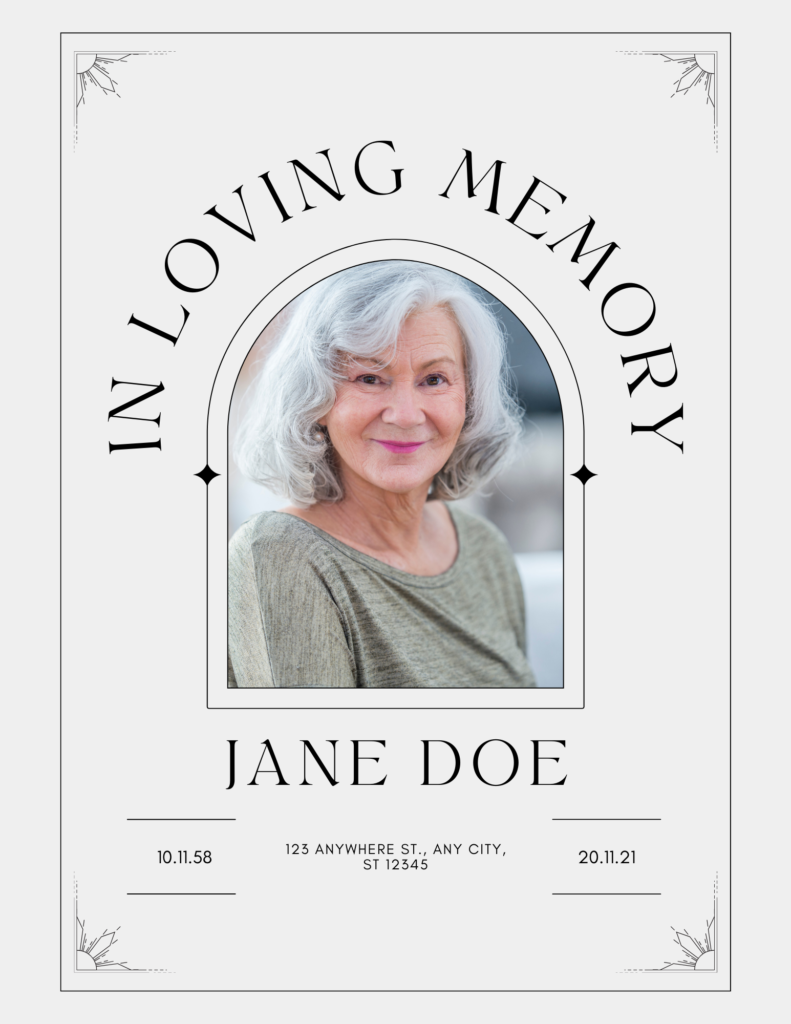
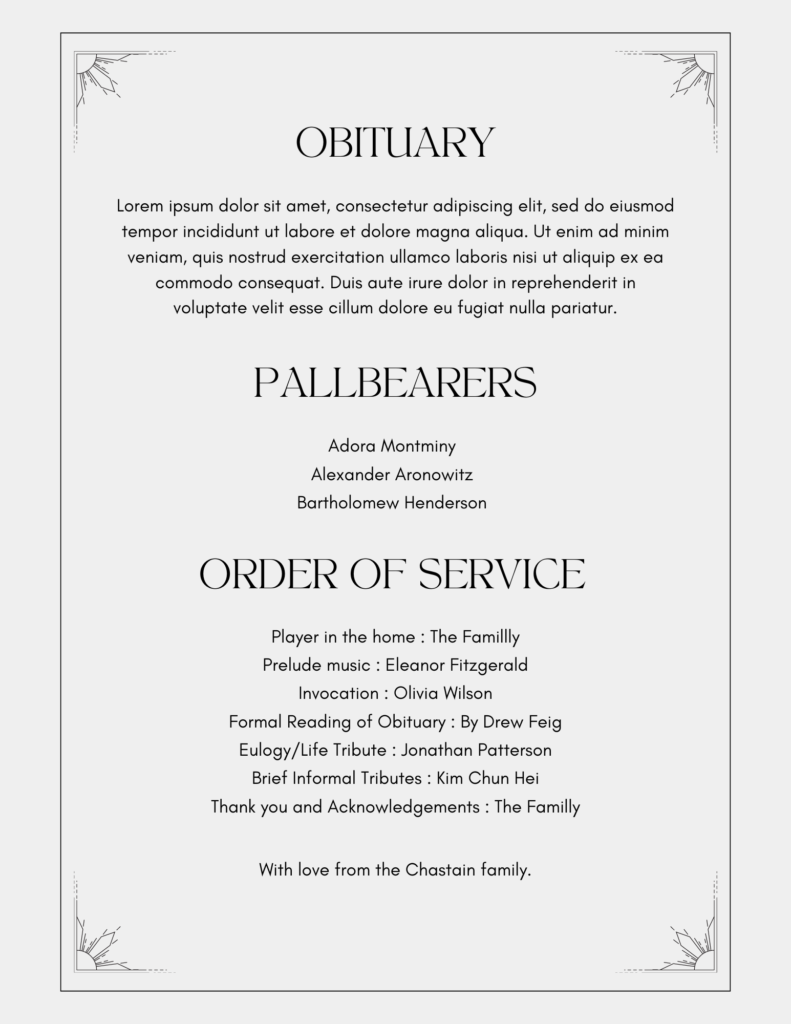
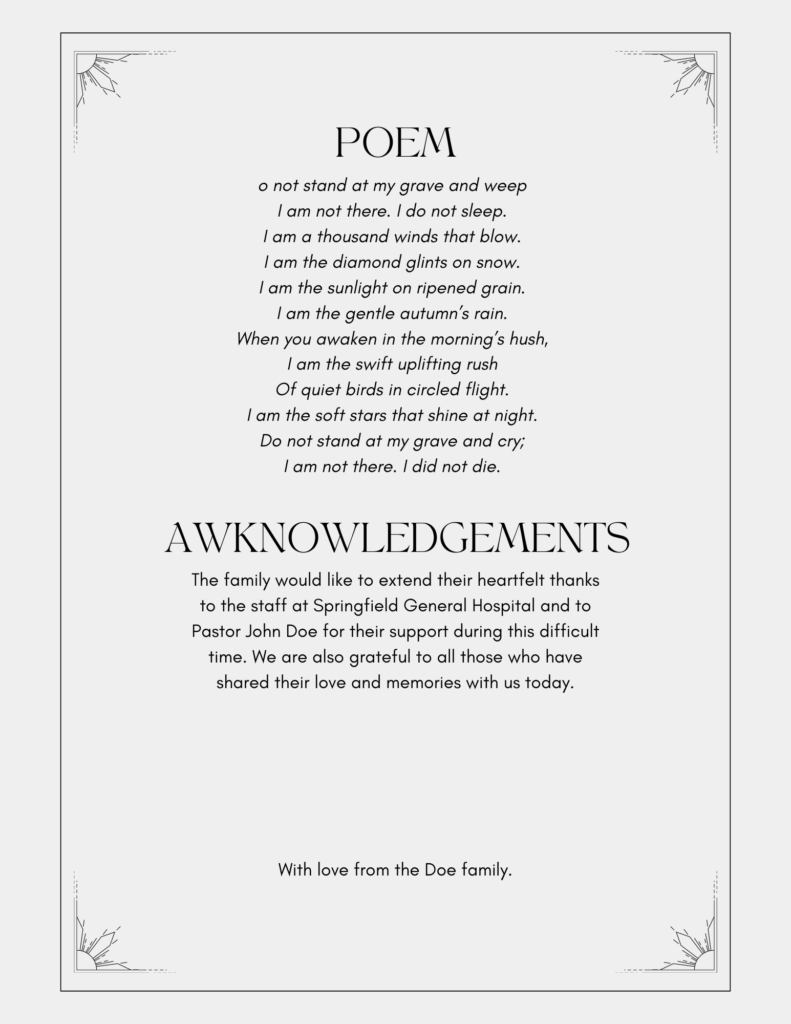
Funeral Pre-Planning FAQs:
A funeral program serves as a keepsake for guests, providing them with an outline of the service, important information about the deceased, and a guide to the order of events. It also honors the memory of the deceased by highlighting significant moments in their life.
Funeral programs typically come in various sizes, including single-fold (5.5” x 8.5”), bi-fold (8.5” x 11”), or even tri-fold styles. The size depends on the amount of information you wish to include and the design layout.
Yes, funeral programs can be highly personalized. You can include custom photos, poems, or stories that reflect the personality and life of the deceased. Many people choose to incorporate personal touches such as favorite quotes or songs.
For those unable to attend, you can send the funeral program via email, post it on a memorial website, or mail physical copies to them. Many families choose to create digital versions of the program for easy distribution.
